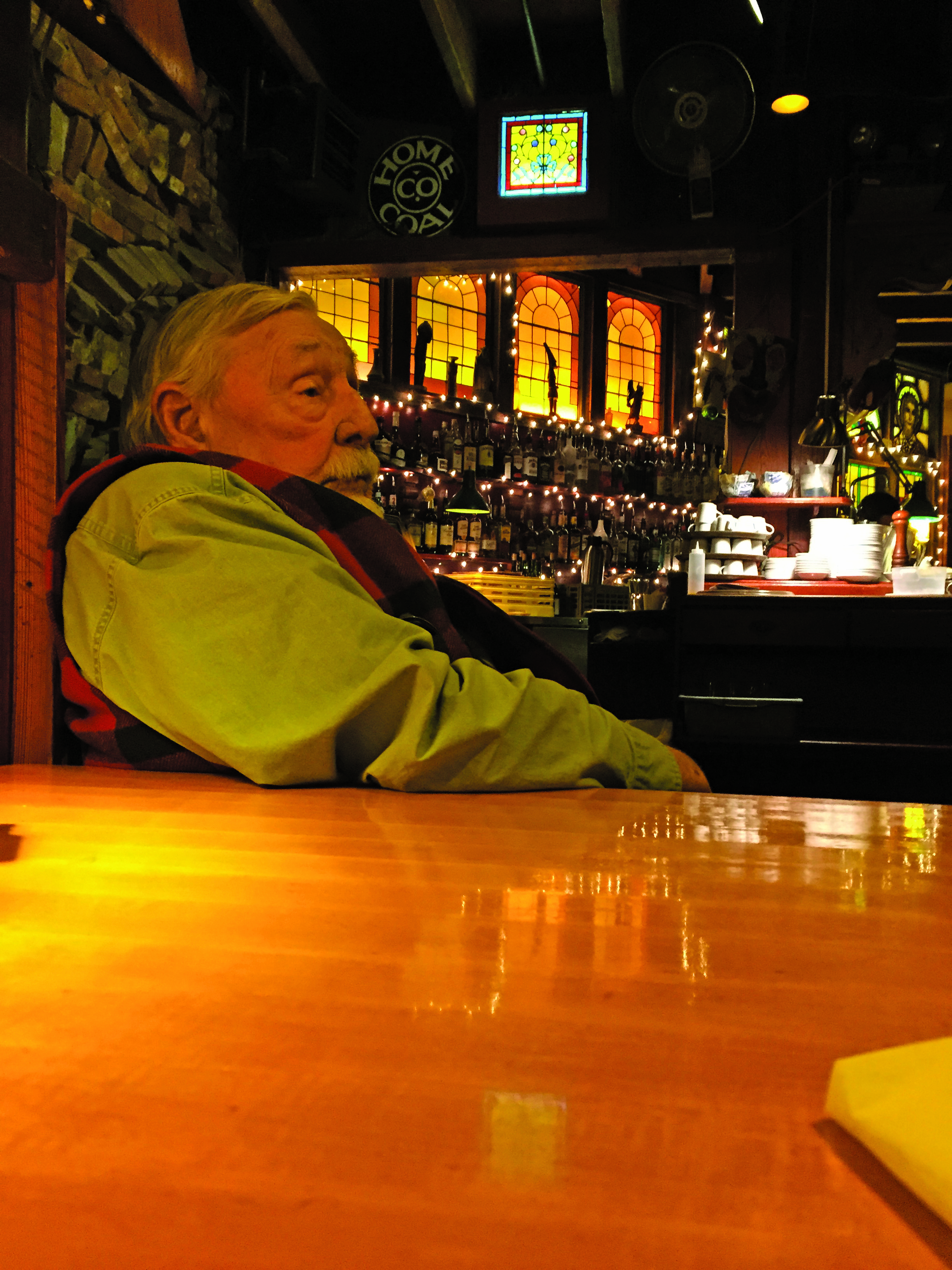Back in 1969 we acquired a street dog named Napi. He was a real son of a bitch. I wanted to call him Walt (Whitman), but the name just wouldn’t stick for some reason. After being abandoned by some heartless soul, the dog had taken up temporary residence on Helen and Napi Van Dereck’s recently arrived sailboat, so we called him Napi. (We couldn’t very well call him Helen.)
Napi the dog was a most independent soul, an outlaw, a lover, a fighter, and a roamer. I spent many days searching the town for him, trying to bring him home before Philly Alexander, the town’s dogcatcher, apprehended him. I remember one late winter afternoon going down Alden Street (I think it was) shouting, “Napi! Napi! Napi!” when a window suddenly flew open and the estimable Pat Saffron leaned out and called, “What do you want with my son?” A small town experience. Pat Saffron died on Christmas Day in 1993.
Her son, that son, Napi Van Dereck, died on Christmas Day 2019. He joins many other good people who left this town this year. He will probably garner a bigger obituary, not because he was better than others, but because he was bigger:outsized, larger than life, a force to be reckoned with, in your face. Napi: whatever he was, he was ours.

People are saying it is the end of an era, and it is true. Napi’s life spanned an important segment of Provincetown’s history, and he was a major player in that history. Imagine: Harry Kemp (1883-1960) would buy little Napi an occasional cookie at Tillie’s Market. How many people alive today go back to those days, when an eccentric poet was a town mainstay? Napi told me once that he remembered the town road that became Route 6 being staked out.
Napi was a real boatman. He knew his boats. He was a constant presence on the wharf. He was a staunch supporter of the Center for Coastal Studies from the very beginning. Its mission was his mission. He was a major collector of art and a patron of artists, none more than Jackson Lambert: Napi saw the genius in him, and in so many others. Napi’s renowned collection of local art now outlives him as an entity unto itself.
Napi was a Beachcomber in good standing (there is no other kind). Napi was a businessman who created a restaurant that, like his art, will outlive him and serve this town. The place is indescribable: a hodge-podge of art and artifact and unusual features that tell you at once that you are not in a usual restaurant.
When I say “Napi” I mean Napi and Helen: no better example of a couple complementing each other exists. He was the front man, and she the strong woman behind the scenes. They accomplished it all together.
Adjectives for Napi: cantankerous, over the top, solipsistic, obstinate; he had a healthy ego; he was a competitive talker. He had to make his point and he had to win every argument. (“You’re not listening to me!”) Ever wonder how he got his name? It was bestowed on him, he told me, as a very young child by his stepfather, and is short for Napoleon — in recognition, even then, of these qualities.
These same qualities, which (mostly) endeared him to us all, did not work in every circumstance. Napi remembered working as a dishwasher at Ciro and Sal’s in the early ’70s, but I remember him on the floor, as a busboy — and not a very good one. My then-girlfriend-now-wife Deborah was the hostess, and she would say something like, “Napi, take those two deuces and make a four-top, and set the home table for a party of eight…,” or something like that, whereupon Napi would pause, reflect, and say, “No, I think it would be better to use the four-top at the corner table and keep the two deuces and use the family table for the party of eight.” And so the debate went on, as the people waited to be seated.
Ah, Napi: seat them any which way. You were ours, and this town is the better for it and will truly never be the same.



